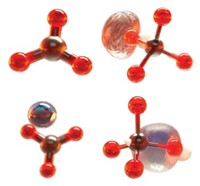Advertisement
Grab your lab coat. Let's get started
Welcome!
Welcome!
Create an account below to get 6 C&EN articles per month, receive newsletters and more - all free.
It seems this is your first time logging in online. Please enter the following information to continue.
As an ACS member you automatically get access to this site. All we need is few more details to create your reading experience.
Not you? Sign in with a different account.
Not you? Sign in with a different account.
ERROR 1
ERROR 1
ERROR 2
ERROR 2
ERROR 2
ERROR 2
ERROR 2
Password and Confirm password must match.
If you have an ACS member number, please enter it here so we can link this account to your membership. (optional)
ERROR 2
ACS values your privacy. By submitting your information, you are gaining access to C&EN and subscribing to our weekly newsletter. We use the information you provide to make your reading experience better, and we will never sell your data to third party members.
Materials
Porous Compounds Probed With Positrons
Electron-Positron annihilation provides a better view of pore structure and defects in metal-organic frameworks
by Mitch Jacoby
January 18, 2010
| A version of this story appeared in
Volume 88, Issue 3

Chemically and thermally induced changes in the pore structure of nanoporous metal-organic framework (MOF) compounds being investigated for gas-storage and other applications can be probed in detail with positrons, according to a Michigan-based research team (Adv. Mater., DOI: 10.1002/adma.200903618). Collisions between positrons (positively charged electrons) and electrons lead to annihilation events that generate gamma rays. The lifetimes of positrons injected into a solid depend on how quickly the particles encounter electrons, which in turn depends on the material’s porosity—its distribution of void spaces. Ming Liu, David W. Gidley, and Adam J. Matzger of the University of Michigan and coworkers exploited those relationships to investigate carbon dioxide uptake and the effects of temperature on MOF-5, a well-studied porous compound. Among the team’s observations is the finding that 20–30% of MOF-5’s open volume remains unfilled with CO2, even at 400 psi, and that the crystals are unexpectedly riddled with 6-nm-long defects. In addition, the researchers found that heat treatments degrade the crystal structure and form pores of a broad range of sizes. These types of defects have not been reported previously in MOF studies based on X-ray structure methods and gas-adsorption techniques, which provide only structurally averaged results, the team says.




Join the conversation
Contact the reporter
Submit a Letter to the Editor for publication
Engage with us on Twitter